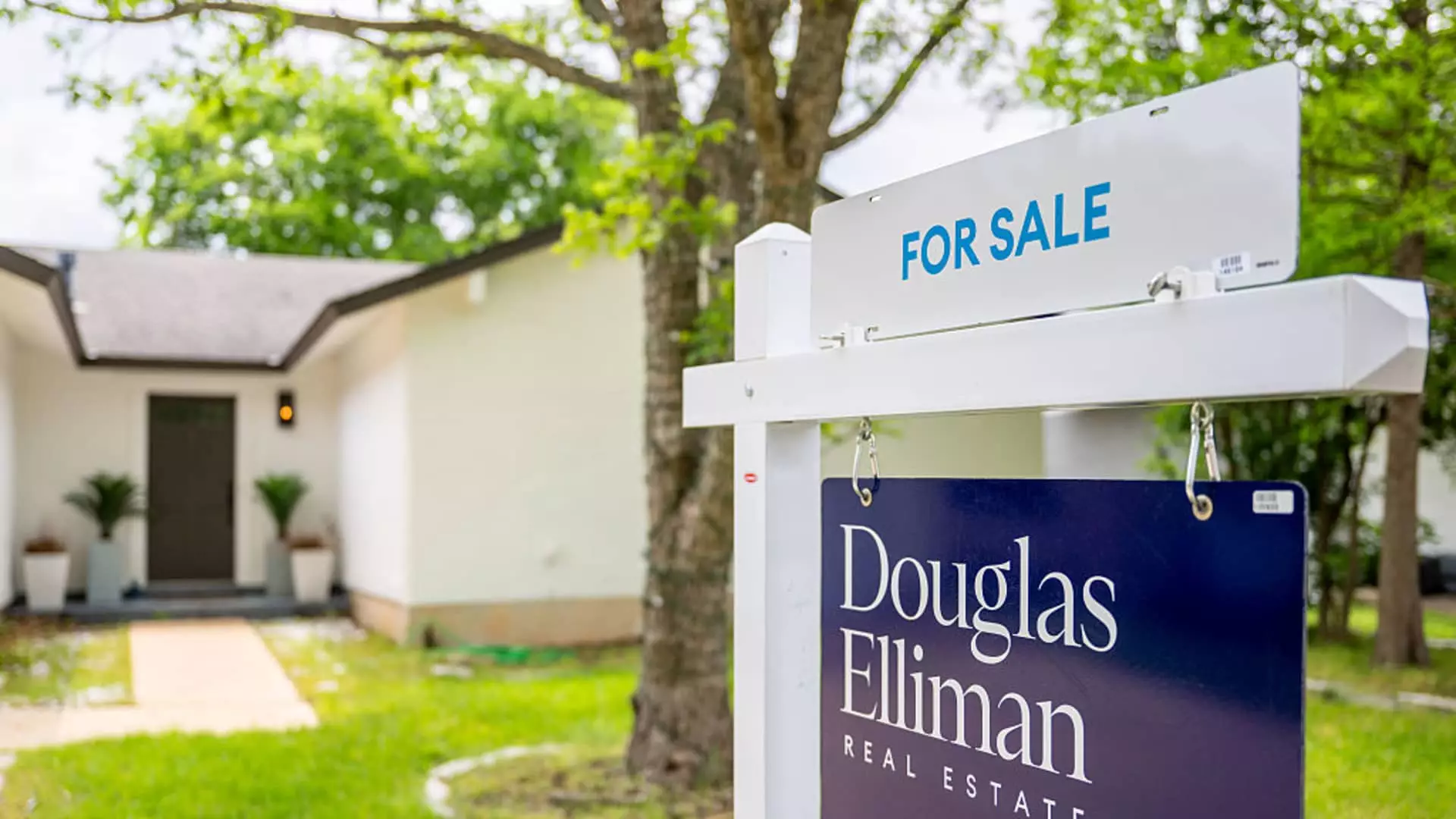In an environment characterized by rising interest rates and economic skepticism, the housing market’s slight uptick in sales during May is both a glimmer of hope and a forewarning. The National Association of Realtors (NAR) reported a mere 0.8% increase in previously owned homes, adjusting to an annualized rate of 4.03 million units. While this growth contrasts sharply with analysts’ predictions of a downturn, it is essential to recognize that last year’s sales numbers haunt us, marking a 0.7% decline when compared to May 2022. Such figures necessitate a deeper examination of market trends that are not only disheartening but indicative of broader economic currents.
Regional Disparities: A Tale of Two Markets
Geography plays a pivotal role in this landscape of modest gains, revealing an intricate interplay between demand and pricing dynamics. Sales soared by 4.2% in the Northeast while the Western region, notorious for its high real estate prices, witnessed a stark 5.4% drop. This stark contrast underscores the regional disparities shaping the housing trajectory, wherein high costs in the West appear to stifle consumer engagement. Analysts argue that purchasing a home in such upscale markets might feel more akin to an act of desperation than aspiration, a bitter pill for potential homeowners hoping to enter the market.
If anything, this snapshot of regional dynamics illustrates the necessity for a nuanced approach to housing reform. For communities striving for economic mobility, addressing the cost crisis in the West is paramount. The mounting pressure against exorbitant pricing demands policy reevaluation, where equitable access to housing should be a national priority.
The Mortgage Rate Hurdle
The elephant in the room remains the high mortgage rates, which have consistently hampered sales momentum. Although stable in March, rates breached the 7% threshold in April, establishing a formidable barrier for prospective buyers. Lawrence Yun, chief economist at NAR, aptly identified this correlation, suggesting that a future decline in rates could trigger a much-needed revival in home buying activity. However, this optimism feels misplaced when contextualized against a backdrop of uncertainty and fluctuating interest rates—an ever-evolving game of financial roulette.
The underlying reality is one where potential buyers must weigh their options against a persistent affordability crisis caused by these high rates. Renters are caught in an unfortunate double-bind, facing escalating costs while mortgage rates keep them tethered to the sidelines. Consequently, we are not just observing a struggle between buyers and sellers but rather a far-reaching dilemma impacting economic mobility, wealth accumulation, and community stability.
The Supply Conundrum
A notable increase in available inventory, with a current supply of 1.54 million units marking a 20% year-over-year spike, provides a modicum of relief. Yet, despite this upward trend, it is clear that we are still grappling with a supply shortage in the historical context. With a 4.6-month supply still below the desired equilibrium, the inevitable pressure on pricing remains palpable, creating a market that feels both stagnant and precarious.
The median home price of $422,800 in May reflects this reality, remaining at a record high even as demand fluctuates. Interestingly, approximately 28% of homes sold went for above the asking price—an encouraging sign yet again overshadowed by the 30% peak observed a year earlier. This vibrant microcosm of the market serves as a paradox: while sales may have crept upward, pricing dynamics reflect a persistent scarcity narrative that is anything but optimistic.
The Impact on First-Time Buyers
Perhaps the hardest hit in this tumultuous landscape are first-time homebuyers, whose representation in the market dropped to a pitiful 30%. Compounded by rising home prices and interest rates, the dream of homeownership feels increasingly elusive. As the generation grapples with a desire for stability and security, they are faced with an unwelcoming market that demands rethinking.
It’s time for our leadership to rise to the occasion and institute reforms that align with our community’s aspirations. Housing should not remain a privilege of the upper echelons but evolve to be a fundamental right for all, facilitated by supportive policies that manage affordability and accessibility. The coming months will undoubtedly test our resilience, but they also present a unique opportunity to reshape our housing landscape for a more inclusive future.

